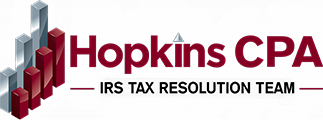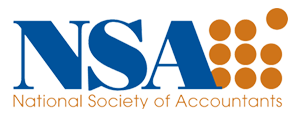Are you concerned about facing financial challenges during retirement, relying heavily on Social Security, and struggling to support your family?
Around 20% of Americans have no retirement savings, potentially placing them directly in the path of these challenging situations. Without adequate savings, these distressing scenarios could become your reality too.
But, don’t worry. Explore different retirement plans like Roth IRAs and 401(k)s to find what suits you best in this blog and make sure your retirement times are the best without any tax complications.
What are Retirement Taxes?
Retirement taxes are taxes you pay on income received during your retirement years. Understanding these taxes is important for effective retirement planning and ensuring your savings last throughout your retirement. Here’s a breakdown of what you need to know about taxes on retirement accounts in the United States:
- Social Security Taxes: Up to 85% of your Social Security benefits may be taxable, depending on your combined income and filing status. If you’re single and your combined income is between $25,000 and $34,000, up to 50% of your benefits may be taxed. For combined incomes over $34,000, up to 85% may be taxable. For joint filers, these thresholds are $32,000 to $44,000 for 50% taxation and above $44,000 for 85% taxation.
- Traditional IRA and 401(k) Withdrawals: Withdrawals from traditional IRAs and 401(k) plans are generally taxed as ordinary income. The amount you withdraw will be added to your taxable income for the year. It’s important to plan these withdrawals carefully to manage your tax liability.
- Roth IRA and Roth 401(k) Withdrawals: Qualified withdrawals from Roth IRAs and Roth 401(k)s are tax-free. Contributions to these accounts are made with after-tax dollars, so you don’t owe taxes on the withdrawals if you meet the requirements (e.g., the account must be at least five years old and you must be 59½ or older).
- Pensions: Most pension income is taxable. The taxable amount depends on how the contributions were made (pre-tax vs. after-tax). If you contributed to your pension with after-tax dollars, a portion of your pension may be tax-free.
- Investment Income: Interest, dividends, and capital gains from investments may also be taxable. Qualified dividends and long-term capital gains are usually taxed at a lower rate compared to ordinary income, which can provide some tax advantages.
- State Taxes: Depending on where you live, your retirement income may also be subject to state taxes. Some states tax Social Security benefits, pensions, and other retirement income, while others do not. It’s important to understand your state’s tax laws to plan accordingly.
Now that we have covered the basics of taxes on retirement accounts, let us look at Roth IRA conversions and 401(k) withdrawals in detail.
What is Roth IRA?
A Roth Individual Retirement Account (IRA) is a retirement account funded with after-tax income. While contributions aren’t tax-deductible, earnings and withdrawals are tax-free if they meet IRS rules. This account, independent of employers, can be opened at any financial institution and offers various investment choices. It’s well-suited for individuals who anticipate higher tax rates during retirement than during their working years.
Difference between Roth IRA and Traditional IRA
Understanding the differences between Roth IRAs and traditional IRAs can help you make smarter choices for your retirement savings.
Here are the key differences to help guide your decision:
| Category | Roth IRA | Traditional IRA |
| 2024 Contribution Limits | $7,500; $8,500 if age 50 or older | $7,500; $8,500 if age 50 or older |
| 2024 Income Limits | Single filers with MAGIs under $161,000 (limit decreases at $146,000); Married couples filing jointly with MAGIs under $230,000 (limit decreases at $240,000) | Anyone earning income can contribute. The deduction depends on income and retirement plan coverage at work. |
| Age Limits | No age limits on contributions | No age limits on contributions |
| Tax Credit | Available for “saver’s tax credit” | Available for “saver’s tax credit” |
| Tax Treatment | No tax deductions for contributions; Tax-free earnings and withdrawals in retirement | Tax deduction in contribution year; Tax-deferred earnings; Ordinary income taxes owed on withdrawals |
| Withdrawal Rules | Penalty-free withdrawals at age 59½ | Penalty-free withdrawals at age 59½ |
| Required Minimum Distribution | None for the account owner. Beneficiaries are subject to RMD rules | Distributions must begin at age 73 for those born between 1951 and 1959, and at age 75 for those born in 1960 or later. Beneficiaries are also subject to RMD rules |
Roth IRA Conversion
Thinking about converting a traditional IRA to a Roth IRA? This strategy offers exciting possibilities for your retirement savings.
Steps to Complete a 401k Roth IRA Conversion
So, you’ve carefully considered your tax benefits and believe a Roth IRA conversion is a strategic move for your retirement goals.
Here’s a step-by-step guide to continue with the conversion process smoothly:
- Assess your Current and Future Tax Situations: Evaluate whether you expect to be in a higher tax bracket in the future and if you can afford the taxes due on the conversion now.
- Open a Roth IRA Account: If you do not already have a Roth IRA, you will need to open one with a financial institution.
- Choose a Conversion Method:
- 60-Day Indirect Rollover: Withdraw funds from your traditional IRA, and you have 60 days to deposit them into your Roth IRA. Note that a 20% withholding tax applies if the check is made out to you.
- Trustee-to-Trustee Direct Transfer: This is a direct transfer from your traditional IRA to your Roth IRA, which can be done between different financial institutions or within the same one.
- Same-Trustee Transfer: If both your traditional and Roth IRAs are with the same institution, you can simply ask to transfer a specified amount from the traditional IRA to the Roth IRA.
- Pay Taxes on the Conversion: Report the converted amount as income for the year, and pay the necessary taxes during the tax-filing season.
Key Considerations for Roth IRA Conversions
While Roth conversions offer exciting possibilities, it’s important to be aware of some key factors that may influence your decision:
- Immediate Tax Liability: Converting from a traditional IRA to a Roth IRA triggers a tax liability on the converted amount, which is taxed as ordinary income.
- Potential for Higher Tax Bracket: The additional taxable income from a conversion could potentially push you into a higher tax bracket for the year, increasing your overall tax liability.
- Five-Year Rule for Withdrawals: To take tax-free withdrawals of earnings from the converted amounts, you must wait five years after the conversion and be over the age of 59½.
- Upfront Cost vs. Long-Term Benefit: The decision to convert should consider the upfront cost of taxes paid against the benefit of tax-free growth and withdrawals in the future.
What is a 401(K) plan?
A 401(k) plan is a retirement savings account provided by employers, allowing employees to contribute a portion of their pre-tax salary. Both full-time and part-time employees can join, typically after working for one year or 1,000 hours. Part-time employees must also be 21 or older and have worked at least 500 hours per year for the last three years to qualify.
How to take 401(k) Withdrawals?
Understanding when can I take out my 401k is essential for planning a secure retirement income stream. While contributing to your 401(k) builds your retirement savings, it’s important to know the rules around accessing these funds.
- Contribution to 401(k): You can contribute a portion of your pre-tax salary to your 401(k), reducing your taxable income. Many employers also match contributions, enhancing your retirement savings.
- Choosing Withdrawal Options at Retirement: Upon retiring, you can opt for regular payments from your 401(k), set up either for a specific number of years or for life, depending on your plan’s options. Alternatively, you can make larger, less frequent withdrawals based on your financial needs.
- Investment of Remaining Funds: Funds remaining in your 401(k) continue to be invested in stocks, bonds, or mutual funds as chosen by you. The performance of these investments will affect your account’s balance and potential withdrawal amounts.
- Tax Implications: Withdrawals from your 401(k) are treated as taxable income, so they’re taxed at ordinary income rates and contribute to your annual income.
This process shows how you can add to and take money out of your 401(k) plan, adjusting your withdrawals based on your retirement needs while keeping the rest of your money invested.
401(k) Withdrawals Types
Knowing how to access your 401(k) savings is essential for planning a comfortable retirement. While the goal is to let your contributions grow for the long term, there are times when you might need to tap into those funds. Here’s a breakdown of the different withdrawal options available and the key factors to consider when making these decisions:
- Regular Withdrawals: These are allowed when the account holder reaches age 59½, enabling penalty-free access to the funds.
- Early Withdrawals: Withdrawals made before age 59½ generally incur a 10% early withdrawal penalty unless specific conditions are met, such as severe financial hardship.
- Hardship Withdrawals: Permitted under certain circumstances, these withdrawals may be necessary for immediate and heavy financial needs like medical expenses or tuition fees.
You can start taking money from your 401(k) without penalties at age 59½. However, if you leave your job during or after the year you turn 55, you can withdraw earlier without facing the usual 10% penalty, thanks to the Rule of 55.
Tax Rules for Early Withdrawals and Required Distributions
Understanding the tax implications is vital when accessing your 401(k). Here are the key rules:
- Early Withdrawals: Withdrawing funds before age 59½ can lead to a 10% penalty and the amount withdrawn will be taxed as income, increasing your tax liability for that year.
- Required Minimum Distributions (RMDs): Starting at age 73 (for those born between 1951 and 1959) or 75 (for those born in 1960 or later), you must begin taking RMDs. These withdrawals are taxed as income and are designed to ensure funds are withdrawn throughout your lifetime, as per IRS rules.
What are Qualified Charitable Distributions (QCDs)?
A Qualified Charitable Distribution (QCD) allows you to transfer funds directly from your IRA to a charity. This move offers tax benefits as it does not count as taxable income, thus lowering your overall tax obligation.
Tax Benefits of QCDs
If you’re looking to manage your retirement income while supporting charity, QCDs could be a great option. Here’s how they help:
- Non-Taxable Withdrawals: QCDs aren’t counted as taxable income.
- Reduction in Required Minimum Distributions (RMDs): QCDs can fulfill your RMDs, which are mandatory at age 73, reducing the taxable income that RMDs usually generate.
- Standard Deduction Retention: You can still claim the standard deduction while using QCDs to lower your adjusted gross income (AGI).
Eligibility Criteria for QCDs
- Age Requirement: You must be at least 70½ years old.
- Account Types: Eligible accounts include traditional IRAs, Roth IRAs, inactive SEP, and SIMPLE IRAs.
- Charity Qualification: Only donations to IRS-qualified charities count.
- Direct Transfer: Funds must be transferred directly from the IRA to the charity.
Tax Implications associated with QCSs
QCDs offer specific tax advantages:
- Non-Inclusion in Gross Income: Keeps your AGI low, which can reduce taxes on other income.
- No Need to Itemize Deductions: You can take the standard deduction and still benefit from your charitable contributions.
- No Federal Withholding: Ensures the full donation amount reaches the charity without deductions.
Deduction Limitations for QCDs
While beneficial, there are some limits to keep in mind:
- No Double Benefits: You cannot claim a charitable deduction for QCDs excluded from your gross income.
- Annual Limitation: The annual QCD limit is $100,000 per taxpayer; amounts above this follow regular tax rules for IRA distributions.
In addition to explaining QCDs, we also offer expert help with IRS letters or notices and tax relief programs like innocent spouse relief and penalty abatement, making it easier for you to handle your tax matters.
IRS Liens and Retirement Benefits
IRS liens and retirement benefits are interconnected, primarily when it comes to the collection of tax debts. To better understand these, let’s first understand what is IRS Lein.
An IRS lien is a legal claim against your property, including real estate, personal property, and financial assets, when you fail to pay your tax debt on time. It is the government’s way of securing interest in your assets as a means of collecting the tax owed.
How Do IRS Liens Affect Retirement Benefits?
Retirement accounts like 401(k)s and IRAs are usually protected from creditors, but the IRS is an exception. If you owe back taxes, the IRS can place a lien on your retirement savings, which could impact your financial plans for retirement. Here’s what you need to know:
- General Protection of Retirement Accounts: Most retirement accounts are safeguarded under federal law from common creditors and during bankruptcy proceedings, ensuring they are not used to settle personal debts.
- Exception for Federal Tax Liens: Unlike other creditors, the IRS can attach tax liens to your retirement accounts if you have unpaid taxes. This includes 401(k)s, IRAs, and other pension plans.
- Impact on Social Security: Social Security benefits are generally protected from garnishment, except when owed to the IRS. The IRS can claim a portion of your Social Security payments to cover back taxes.
- Bankruptcy Consideration: IRS liens on retirement accounts usually persist through bankruptcy, meaning they are not discharged and remain active unless resolved through payment or IRS negotiations.
- Duration of Liens: IRS liens last until the tax debt is fully paid or until the statute of limitations expires, which is usually 10 years from when the tax was first assessed.
- Withdrawal of Funds: Withdrawing funds from a retirement account that has an IRS lien could result in the IRS seizing those funds to cover your tax debt, impacting your available retirement funds.
End Note!
About 86% of working adults know the importance of preparing for retirement, but only 40% of working adults feel prepared for retirement despite knowing its importance.
There’s a clear need for actionable solutions. If you’re among those feeling unprepared, we’re here to help you overcome the difficulties of retirement planning with the best plans like Roth IRAs and 401(k)s and find the best options for your future security based on your wishes and how you like your retirement to be.
In addition to retirement planning services, we also offer assistance with insurance planning, individual and business tax preparation, and unfiled tax returns.










